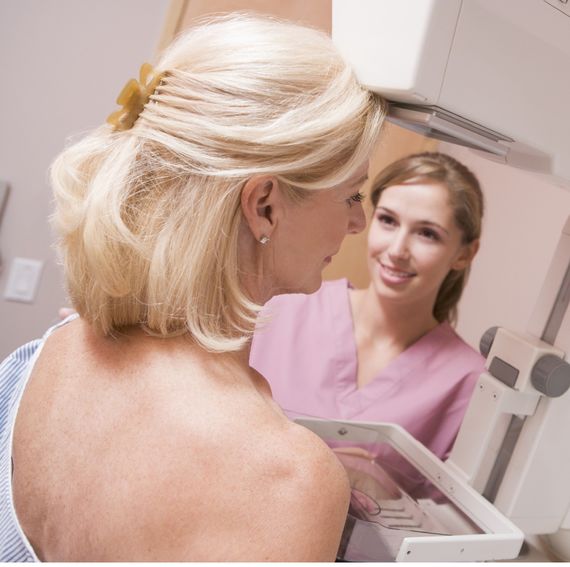Screening exams

Screening mammograms are for women who do not have breast cancer symptoms. The goal is to detect very small benign or malignant tumours as early as possible.
Diagnostic mammograms are done for women of all ages when a problem is noticed during a breast self-exam, a clinical breast exam, or a screening mammogram.
During the mammogram, the breast is compressed to decrease the area to X-ray. This decreases the amount of radiation required while producing a better-quality image of the breast. Some women have discomfort or pain during the compression, but this pain is brief and temporary. The full mammogram appointment lasts between 15 and 20 minutes. First, you’ll fill out a questionnaire from the technologist before having two views taken of each breast (4 views total).
How to get ready for your mammogram
A few days before the mammogram:
To decrease pain, avoid drinking coffee, tea, chocolate and colas.
You should also get your mammogram within 10 days after the start of your period or when your breasts are less sensitive.
On the day of your appointment:
Bring your health insurance card and your program invitation letter or the prescription from your doctor.
Please bring the contact information of the doctor who will receive your results. If you don’t have a doctor, a doctor from a list of volunteers will be assigned to you at the screening centre. This doctor will provide follow-up for your mammogram only (he or she will not become your family doctor).
Do not apply deodorant, powder, cream or perfume on your breasts or under your armpits. These products can show up on images and can be confused with lesions.
Since you will have to undress down to your waist, you should wear a two-piece outfit so that you only have to take off your top.
During the mammogram:
You will have to remove your jewelry (e.g., necklaces, earrings) or any other object that could obstruct the image.
Someone at the screening centre will invite you to register for the PQDCS. If you agree, you will sign an authorization form to release information about your mammogram.
The radiology technologist will help you fill out the health questionnaire and will then perform the mammogram.
See your doctor right away if:
- You feel a mass or thickened tissue in your breast.
- You notice discharge from your nipple or your nipple suddenly becomes inverted.
- You notice redness, eczema or skin changes on a breast or a change in the size or shape of a breast.
For more information about screening mammography, visit the  Portail Mieux-Être of the Ministère de la Santé et des Services sociaux.
Portail Mieux-Être of the Ministère de la Santé et des Services sociaux.
 Additional exams
Additional exams